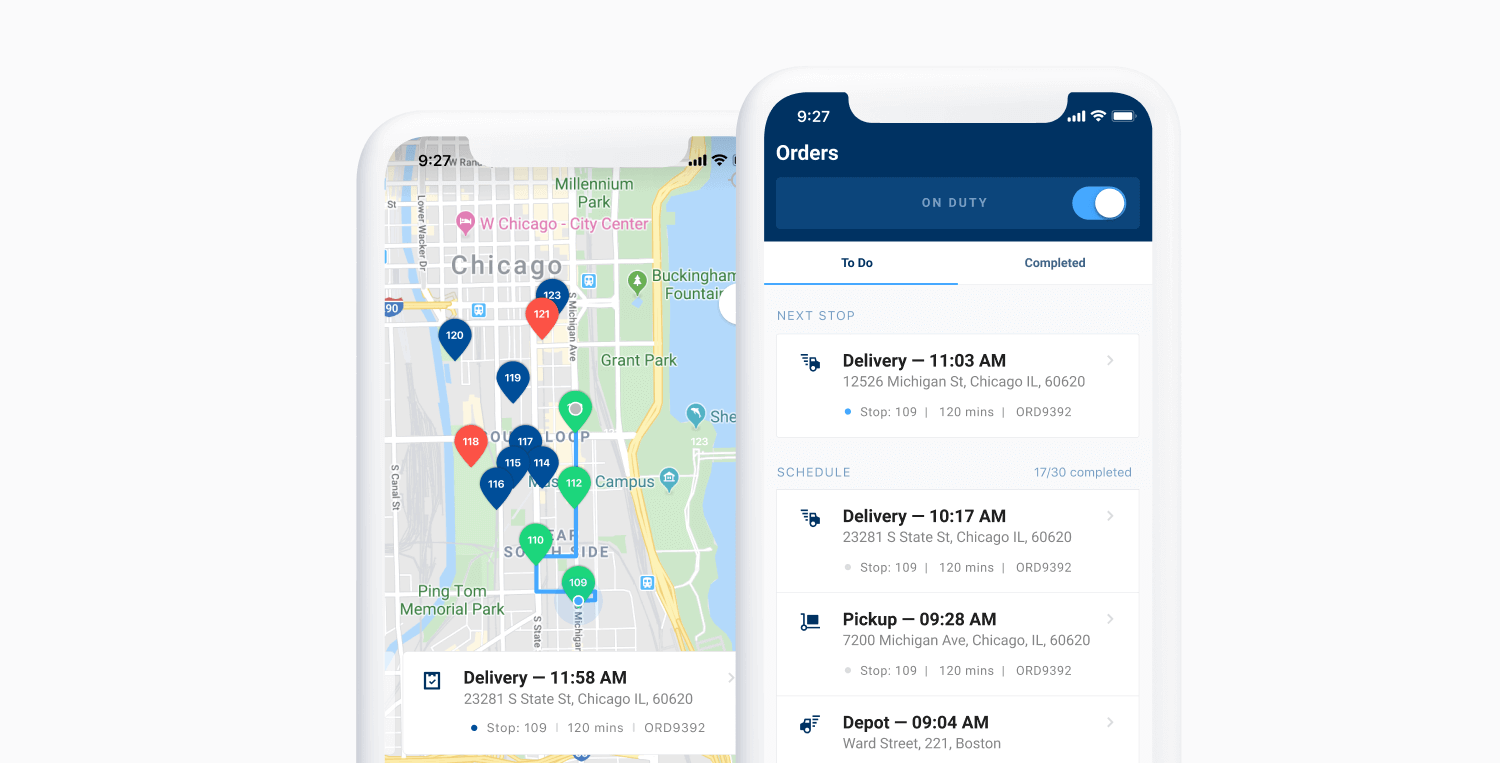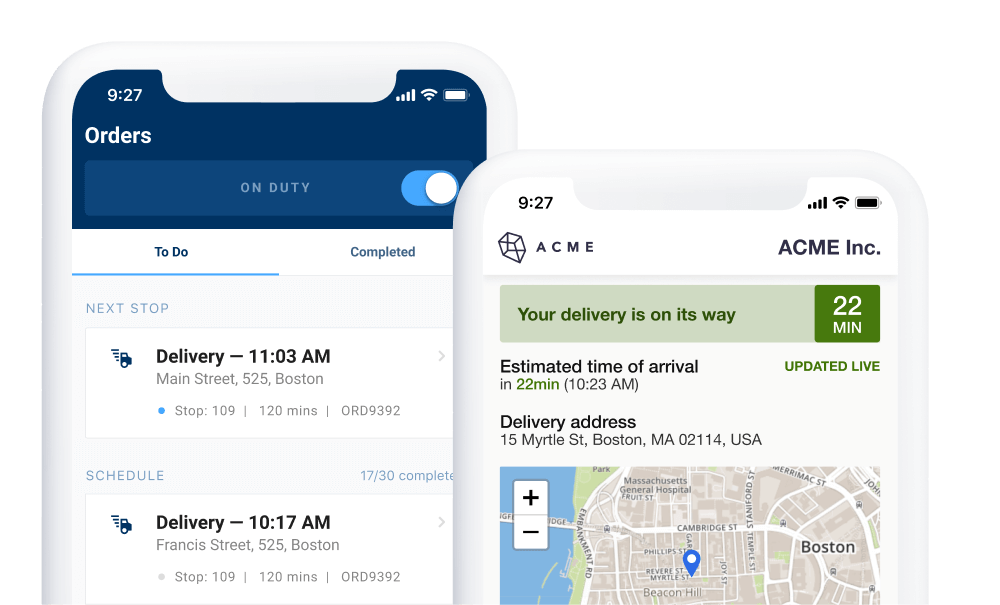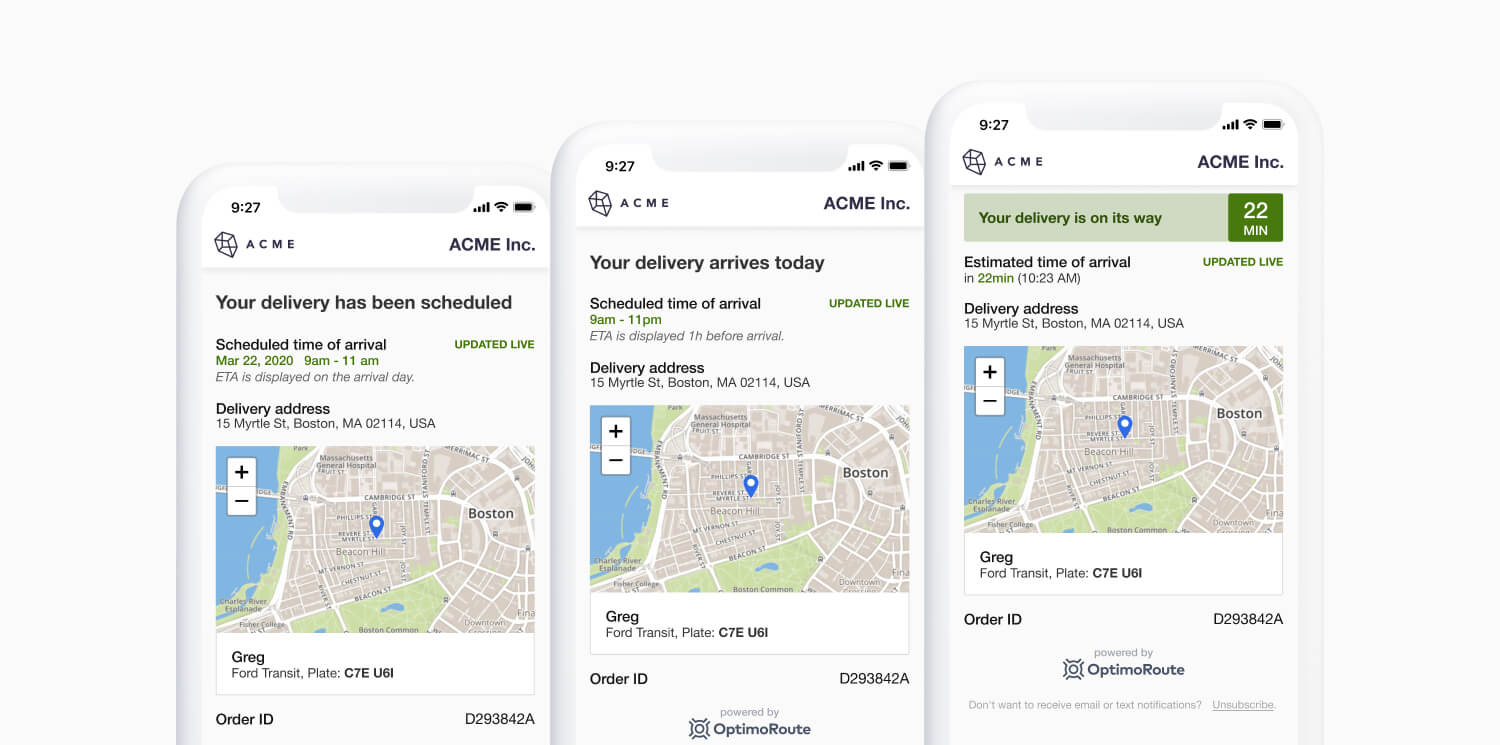The Guide to Conquering Courier Management

Ecommerce is growing at a rapid pace, and it’s making parcel delivery a major concern for companies of all sizes. Large corporations and small businesses alike are wading into the waters of in-house delivery to reduce shipping costs and maintain control over their customer experience.
In-house courier delivery can be extremely beneficial if you do it well. You’d be hard-pressed to find a third-party courier service that cares more about your products and your customers than you do. But there’s a lot to consider when running your own delivery operation.
To conquer courier management, you need a solid understanding of the basics, a handy guide for spotting areas that need improvement, and easy-to-use software—a robust courier management system.
Quickly navigate this article using the links below:
What Is Courier Management?
The 3 Objectives of Courier Management
Why You Need a Courier Management System
OptimoRoute: An Advanced Software Solution
Courier Management FAQs
What Is Courier Management?
Courier management is the process of organizing last-mile delivery operations. Courier management involves scheduling order deliveries and assigning them to couriers, overseeing operations, planning and optimizing routes, overseeing vehicles, managing fuel, and handling courier expense approvals.
The 3 Objectives of Courier Management
There are three main objectives of courier management:
- Deliver products to customers.
- Support the couriers delivering those products.
- Ensure that customers have a great buying experience, so they come back for more.
It sounds simple, but each goal comes with its own set of challenges. Deliveries are time-sensitive, and products can be fragile. Couriers will face obstacles in the field, including traffic, difficulty locating addresses, and customers who aren’t home. And your customers expect frequent updates.
It’s a lot to juggle, whether you’re a seasoned professional or just starting a courier business. The best way to reach these objectives is to break each one down into simpler tasks. We’ve done this for you below.
Deliver products quickly and efficiently
The success of your delivery business hinges on getting orders to customers on time and undamaged. The faster and more efficiently you execute deliveries, the higher your earning potential. This is what it means to deliver products quickly and efficiently:
- Transport products safely. Courier management teams aren’t typically responsible for packaging goods, but they do need to make sure products are protected during transport. Depending on what you’re transporting, you may need insulated bags for food storage, cushioned packaging for breakable goods, or tall dividers for flower deliveries.
- Consistently meet or surpass due dates and times. More than half of online shoppers say delivery turnaround time defines a positive experience, and 89% of consumers report ditching a brand because of poor customer experience. You need to optimize delivery routes, assign deliveries in priority order, and take every step you can to maximize your delivery speed if you want to have a high level of customer satisfaction.
- Drive efficiently. Manual calculations are prone to human error and take longer than using software. Give yourself a competitive advantage by relying on courier route optimization software to calculate the most efficient routes in seconds.
Consider implementing fuel-management strategies, too. You can cut fuel costs and increase your overall efficiency simply by maintaining delivery vehicles and teaching couriers fuel-efficient driving techniques.
Maximize work capacity by supporting couriers
When a customer shops online, couriers are the only brand representative customers meet. Couriers are arguably your most valuable asset, so it makes sense to support them any way you can. Here’s how you can enable couriers to perform their best and, in turn, drive revenue for your company using a route optimization tool like OptimoRoute:
- Give couriers clear routing instructions that are easy to follow. Otherwise, delivery drivers will spend a lot of time sitting in their car, entering each new address into their GPS instead of driving to their next destination. Use the OptimoRoute Driver App (Available on Android and iOS) to provide drivers with turn-by-turn navigation from their preferred mapping app. This will make the whole delivery process more efficient, which can lead to more deliveries per day—and more money for you.
- Give couriers advance notice about shifts. Minimize last-minute no-shows by giving workers their schedules as far in advance as possible. With OptimoRoute, you can schedule as far as 5 weeks in advance. The more notice you give couriers, the easier it is for them to find coverage, and the less likely they are to “call in sick” the morning of their shift. Check out our guide on shift work scheduling for more on this.
- Schedule driver breaks appropriately. Driver breaks aren’t a luxury; they’re a legal right, and you can run into a lot of issues if you don’t proactively schedule them. OptimoRoute helps you schedule breaks automatically to have the least impact on delivery routes.
- Motivate couriers with clear goals and company purpose. Numerous publications have documented the correlation between a positive company culture and worker productivity. Set clear goals, and support your employees so they achieve them.
If your couriers are underperforming, the best way to find a solution and figure out how you can help them is to simply ask. Couriers may be facing challenges in the field that you aren’t aware of. Schedule regular one-on-one check-ins with each member of your team, and you’ll gain valuable insight into ways you can better support their efforts and improve overall workflow.

Deliver an elite customer experience
Every step in both the logistics supply chain and the last-mile delivery chain moves you closer to the ultimate goal: delivering a great experience to customers. When your products arrive safely and on time, customers typically have a good experience. But if you want to take that experience from good to outstanding, you’ll need to do the following:
- Provide highly accurate delivery ETAs. Customers want delivery-status updates (either via SMS or email), and the more precise you can be, the better. Choose a courier delivery management software equipped with real-time updates for customers.
- Develop a customer-centric contingency plan. Even if you provide live tracking for customers, you’re going to run into situations where you need to deliver a package, but the customer isn’t home. You must have a strategy for scenarios that put the customer first, whether that’s leaving the parcel with a designated neighbor or calling the customer to ask what they’d like you to do.
Courier management is a process that can always be improved. Revisit these objectives often, and always look for ways you can do these things better, faster, and more efficiently.

Reduce your operational costs by 30%
Increase delivery capacity by 43%
Plan 7x faster
Why You Need a Courier Management System
You need a courier delivery management system because without one, you won’t be competitive. A courier delivery management system, or CMS, is business software that simplifies courier management and routing. A CMS streamlines all of the following tasks:
- Planning and optimizing delivery routes
- Courier tracking and scheduling
- Analyzing courier performance
- Package tracking during delivery service
- Updating customers
Manual planning and routing are time-consuming processes. It’s hard to isolate the optimal route across cities with thousands of different roads. It’s nearly impossible to do this well when you need to calculate hundreds or thousands of stops. This is known as the traveling salesman problem—and it’s what courier management systems set out to solve.
OptimoRoute: An Advanced Software Solution
At OptimoRoute, we set out not only to solve the traveling salesman problem but to give businesses of all sizes access to advanced tools—features you can use to not only plan routes but also plan five weeks in advance. Not only update your customers but also give them a live tracking link, so they can see where their courier is in real-time.
These are just some of the many things you can do with OptimoRoute courier management software:
- Replan routes and send them to drivers’ phones even when they’re already in the field.
- Spot when additional couriers need to be scheduled or hired to meet order demand—up to five weeks in advance.
- Seamlessly schedule drivers’ breaks.
- Input unique vehicle capacities for your fleet.
- Schedule drivers to return to a depot to reload without having to start a new route.
- Balance routes for the lowest cost, even up distribution among drivers, or both.
- Provide your customers with real-time tracking and live ETAs that show the minute their order will arrive.
- Customize your customer notifications.

You’ll also gain insight through our advanced analytics features that collect information as you go. The longer you use OptimoRoute, the more in-depth knowledge you get about your overall efficiency, percentage of on-time deliveries, individual driver performance, and much more.
Courier Management FAQs
Get answers to some of the most common courier management questions below, along with links to resources where you can learn more.
Is inventory management part of courier management?
Inventory management and courier management are different things. Inventory management is the act of managing products or stock within a warehouse. Courier management encompasses last-mile delivery and delivery team management. These processes go hand-in-hand and often work in tandem but are managed by separate teams.
What’s the difference between courier management software and warehouse management software?
Warehouse management software (WMS) is designed to simplify inventory and logistics management within a warehouse or storage facility. CMS simplifies courier management and last-mile delivery. Many courier companies and logistics businesses use both. This software can be easily integrated for seamless communication.
How much is a courier management system?
Prices vary depending on the specific software solution you choose and the number of drivers or vehicles you have in your fleet. OptimoRoute starts at $19/month per driver, billed monthly (or $17.10/month per driver, billed annually). We offer a 30-day free trial, with no credit card information required, so you can try it risk-free. Learn more about our pricing structure.
How do I offer package tracking for my customers?
The easiest way to provide package tracking to your customers is to use a CMS with route optimization, such as OptimoRoute, and let technology do the work for you. OptimoRoute uses your couriers’ GPS locations to provide your customers with live tracking and ETAs that show when their order will arrive down to the minute. All you have to do is enable customer notifications and create your custom messaging.
Does courier management software help with shift work scheduling?
Most courier management software systems have at least basic employee scheduling features. OptimoRoute has advanced features that help with scheduling as well as planning. You can schedule employees and route deliveries up to five weeks at a time in OptimoRoute, and the software will show you if you need more drivers to meet demand during a specific shift. OptimoRoute also makes it easy to schedule drivers’ breaks and quickly adjust planning if a driver runs into traffic or hits a snag along their way.
Do courier management systems work if I have contract drivers?
Yes, whether your drivers are independent contractors, full-time employees, or a mix of both, you can use courier software. Courier management systems like OptimoRoute rely on GPS tracking, which is enabled through an app each driver downloads onto their phone, so drivers can use their own cell phones and their own vehicles.
Do courier management systems work if my couriers drive vehicles of different sizes?
Yes, as long as you choose a courier management software such as OptimoRoute that allows you to enter unique cargo-space specifications for each driver. In OptimoRoute, once you’ve input vehicle specifications, you’ll be able to plan routes that include multiple trips back to a depot to reload, too.
A Partner You Can Grow With
At OptimoRoute, we know you’re working hard to grow your business, and we believe it’s our job to grow along with you. That’s why we’re constantly working to improve our software and support you on the road to delivery success. We’re developing new features based on feedback from customers, and our support team is available to help you get set up, troubleshoot integrations with other software, or answer any questions you might have along the way.
Plus, you can try OptimoRoute risk-free for 30 days. Start a free trial today—no credit card required.
Try OptimoRoute™ for Free
No installation or credit card required


